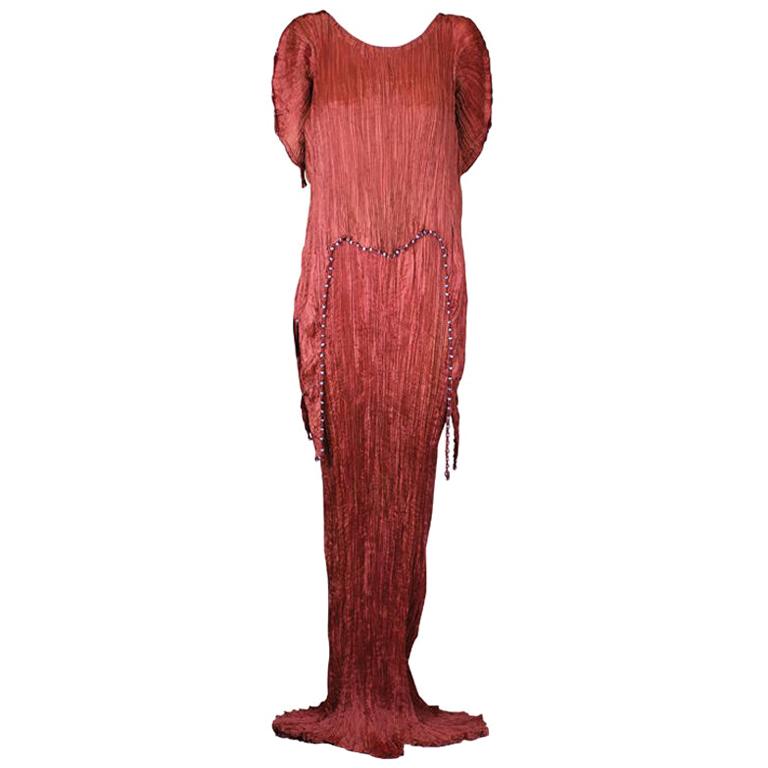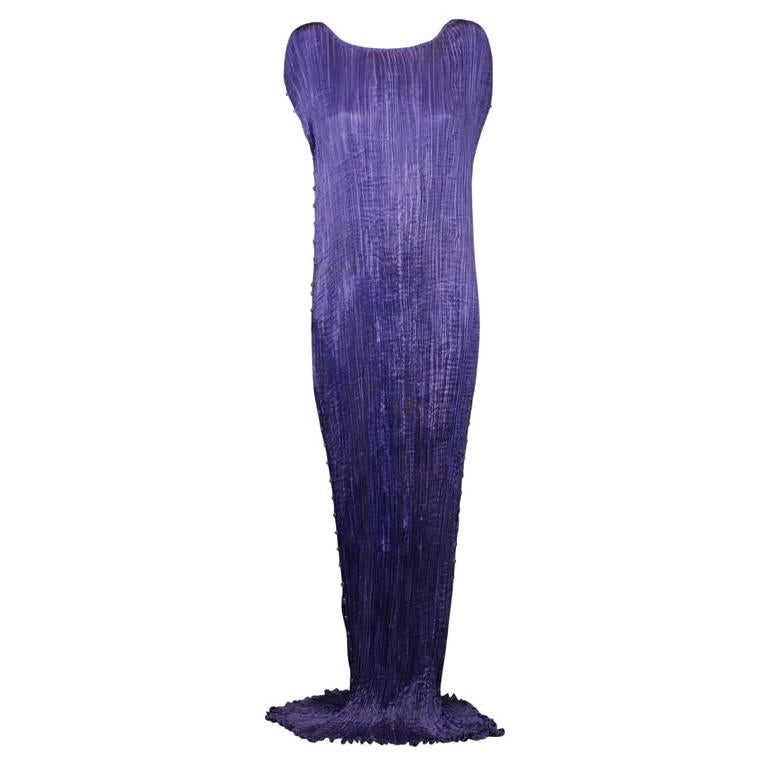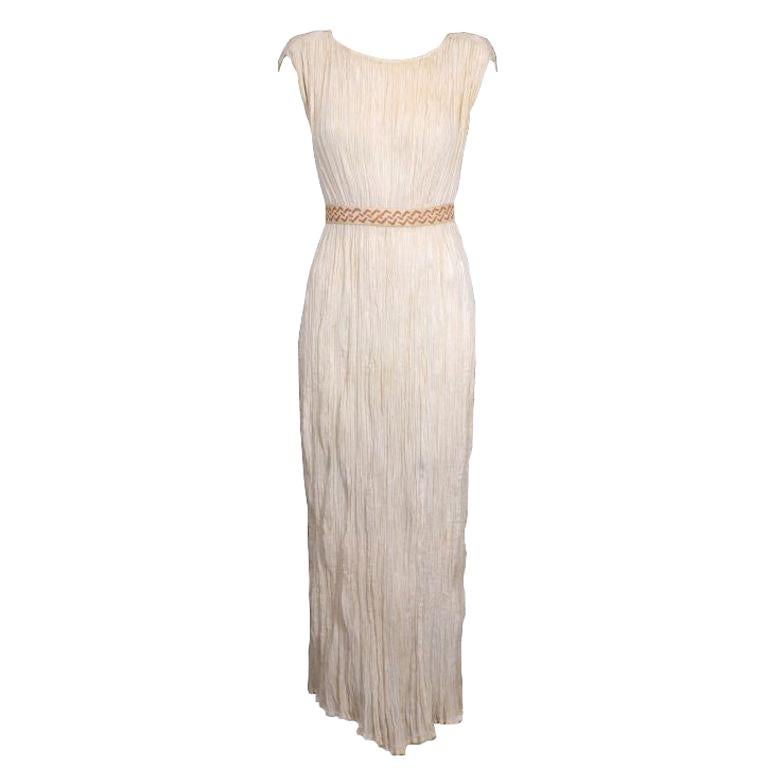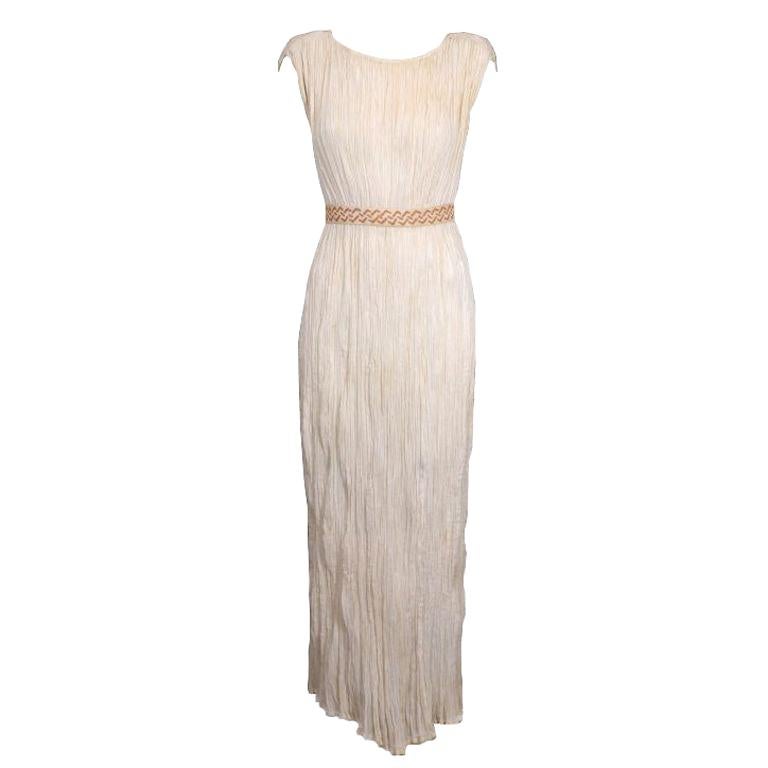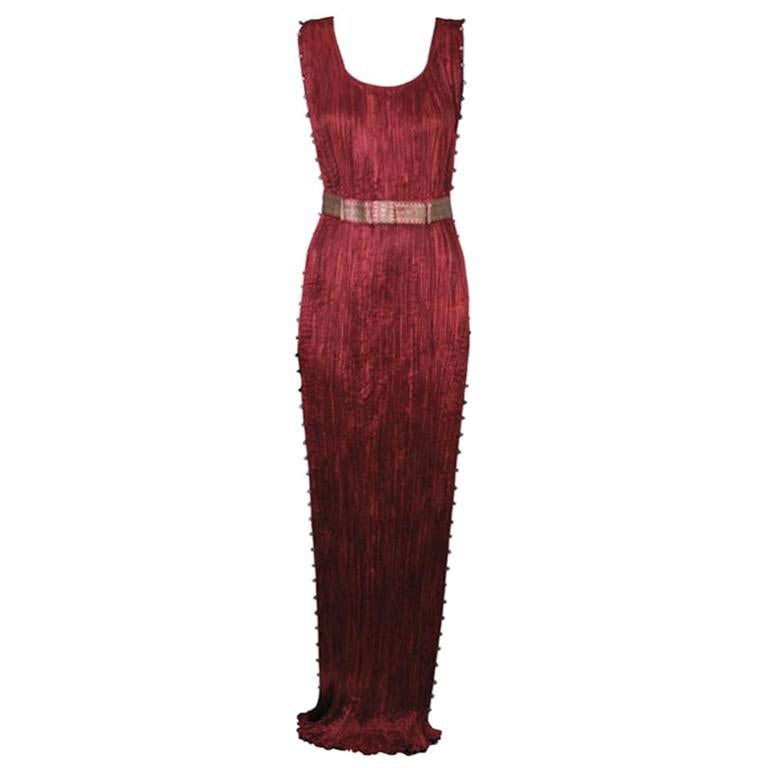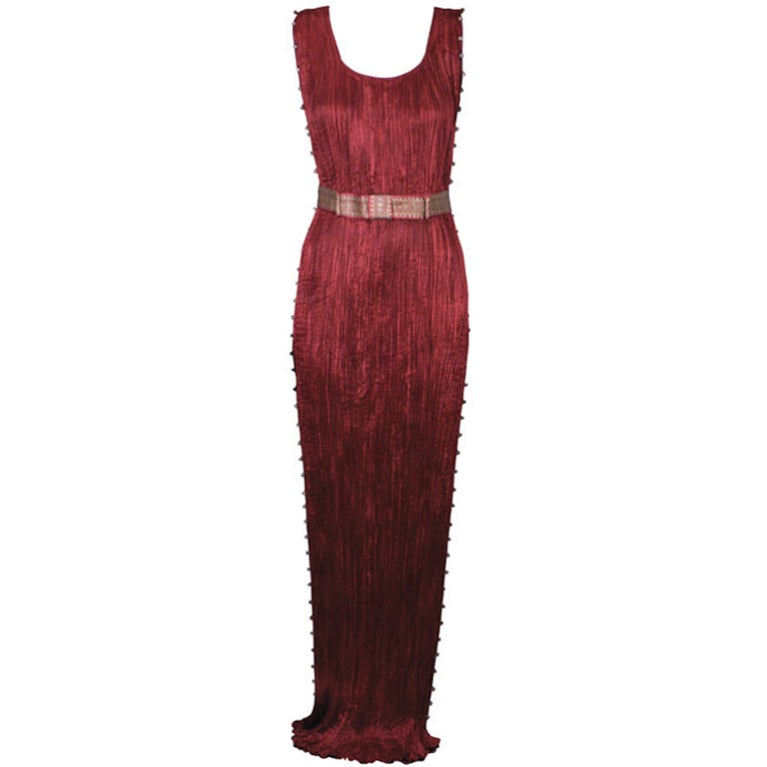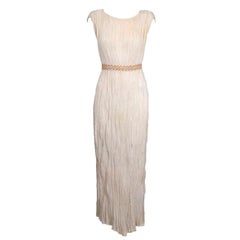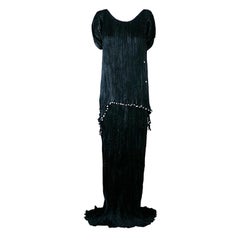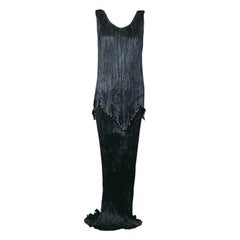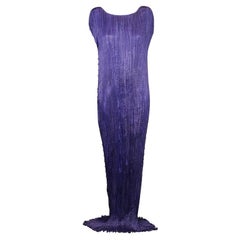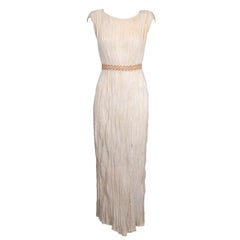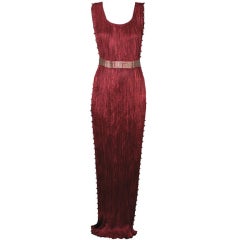Mariano Fortuny Sienna Peplos Gown
About the Item
The Peplos worn by the women in ancient greece was an outer garment . Consisting of a rectangular piece of fabric,it was arranged so that the material was folded double at the top, drawn around the body under the arms and fastened over each shoulder by a clasp or pin. As originally conceived the right side of the garment was left open. Its loose upper portion fell in large folds over the upper part of the torso and was weighted in its lower corners with metal drops.
Fortunys adaptation included terminating the over fold in deep points weighted by small glass beads.
Length front 60"
Back train 62"
Label Orange on muslin tape
Beads grey with red and blue stripes
The pleats in the fabric allow the gown to expand to fit a range of sizes.
- Designer:
- Brand:
- Place of Origin:
- Period:
- Material Notes:Silk, glass
- Condition:excellent.
- Seller Location:Riverdale, NY
- Reference Number:1stDibs: AU1012061769
Fortuny
Spanish fashion designer Mariano Fortuny was an innovator in the world of textile design. He drew on classical Greek tunics for his rich and interesting garments and worked with a revolutionary system for creating pleats. He designed a range of clothing for his couture house, and today, vintage Fortuny evening gowns, gemstone-colored day dresses, coats and accessories like drawstring bags are known for their fine craftsmanship and signature elegance.
Fortuny was a true artist who worked with beautiful fabrics as his medium of choice. Although he showed talent in painting, sculpting, photography and architecture at an early age, fashion was where he really shined.
Fortuny was born Mariano Fortuny y Madrazo in 1871 in Granada, into a family of artists. His father died when Fortuny was only three years old, and his mother moved the family to Paris. As a child, Fortuny was fond of experimenting and figuring out how things worked. He even dyed pieces of fabric from his family's textile collection, which had been amassed from shops around Europe.
In 1889, the family moved again, this time to Venice. Here, Fortuny found inspiration in the past, which would influence his future designs. Not long after, the young Fortuny set off to travel the continent. In 1897, he visited Paris and fell in love with a dressmaker named Henriette Negrin. She became his muse, his wife and his creative partner — Negrin worked with Fortuny on clothing designs and fabrics — and the two settled in the French capital.
A lifelong inventor, Fortuny began patenting his creations in 1901. By 1934, he had registered more than 20 patents. At the same time, his fashion career was taking off.
In 1907, he designed the Delphos gown with Negrin, which French novelist and essayist Marcel Proust described as "faithfully antique but markedly original." Fortuny had worked from his home until 1922 when increased demand required large-scale production. He opened a factory in Venice, where due to the scarcity of silk, he began experimenting with cotton.
In 1927, New York interior designer Elsie McNeill traveled to Paris to meet Fortuny and became his exclusive American distributor. She returned to the United States and introduced Fortuny's designs to New World audiences. Shops opened in Paris, New York and London. Toward the end of the 1930s, Fortuny returned to painting and stepped away from the busy fashion industry.
After Fortuny passed away in 1949, McNeill took over the label and continued running it until 1988, when it was purchased by the Riad family, who remain at the helm of Fortuny today.
On 1stDibs, find vintage Fortuny clothing and accessories.
- ShippingRetrieving quote...Shipping from: Riverdale, NY
- Return Policy
More From This Seller
View AllNamed after a Greek clas...
Early 20th Century Italian Art Deco Delphos Gowns
Early 20th Century Italian Art Deco Delphos Gowns
Early 20th Century Italian Art Deco Peplos
...
Early 20th Century Italian Art Deco Delphos Gowns
Named after a ...
